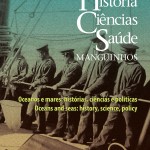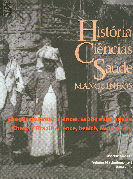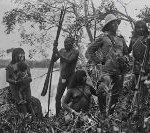July 2015

“The contribution made by the colonies went beyond the financial aspect, and colonies gave more than what they received in return”, underlined Rita Pemberton, from the University of York (Credit: Roberto Jesus Oscar / Casa de Oswaldo Cruz).
Professor at the University of York, Rita Pemberton introduced her paper Prelude to Rockefeller: Health problems in Trinidad and Tobago, 1900-1930 during the workshop Tropical Diseases in Latin America and the Caribbean: A Historical Perspective. In her exposition, Pemberton highlighted the challenge imposed by the imperial expansion, which stimulated the development of tropical medicine and contributed towards the foundation of specialized publications and medical schools in Europe. The researcher focused on the health situation in Trinidad and Tobago in the first three decades of the 20th century, when the colony was under Britain’s domain explored due to its cocoa and oil fields.
The Journal of Tropical Medicine, from 1898, and the London School on Tropical Medicine, created in October 1899 are such examples of publications and institutions. The American Society of Tropical Medicine and Hygiene was created in 1903. According to Pemberton, those institutions were responsible for the research on diseases like malaria, sleeping sickness, ancylostomiasis, some of which have already been eradicated. Such institutions became reference on medical issues that affected the tropics.
“We should not, however, presume that this was a gift from the British Empire to its colonies” observed Pemberton. “In reference to Trinidad and Tobago, the contribution made by the colonies went beyond the financial aspect, and colonies gave more than what they received in return in the short term”, underlined.
Although the colonies were rich in natural resources, they lacked in infrastructure. According to the research, the islands were among the most prosperous in the region during the first decades of the 20th century, but this wealth was not reflected in the population’s health or sanitary conditions.
Health conditions in Trinidad and Tobago
A smallpox epidemic took over the islands in the beginning of the 20th century but the authorities did not recognize it. Pemberton observed that the official data was rather modest: there were 4335 cases recorded, with 27 deaths. “Those figures could have been as much as double”, pointed out the researcher.
In 1912 a dysentery epidemic attacked 3179 people in Tobago, resulting in 466 deaths. Among the causes, the protracted drought, which reduced the availability of goods and provoked poverty and famine, was cited as the main source of illness. Assumptions on the pest, ignorance, and superstition were the “official explanations for all the diseases in the colonies during that period”, observed Pemberton. “However, it is a fact that there were no adequate medical facilities or hygiene conditions available to the population, a situation that persisted until the decade of 1950”, underlined.
Malaria, tuberculosis and ancylostomiasis, as well as dysentery and venereal diseases, were the main causes of death, which also affected the infant mortality rate. The figured reached 148.7 for 1000 inhabitants, described by the authorities as “not exactly ideal”.
The International Health Commission in Trinidad and Tobago
The International Health Commission launched a campaign against the ancylostomiasis in Trinidad and Tobago, where the disease was considered serious, but it was not completely eradicated. Nevertheless, the objective was to contribute towards an improvement in the hygiene conditions in the colonies, especially in areas inhabited by the indigenous population. Measures were executed from August 1914 in the cities of San Fernando and Sangre Grande until December 1924 in Tobago.
An important aspect of the campaign were the experiments on patients without their knowledge or consent. In such cases, Chenopodium oil was utilized in heavier doses than what is normally accepted (50 drops instead of three).
In 1883, the doctor Bevan Rake, who was superintendent at the leprosy asylum, conducted experiences without the patients’ consent utilizing mercury ointment, chaulmoogra oil and nitric acid, pointed out Pemberton. According to her, the human cost of the experiments was never evaluated. This power allowed Europeans a “greater control on the bodies of non-white patients who were regarded as the ideal test subjects”.
According to the researcher, the sickness was caused by the “stupidity and ignorance of patients”, being the norm in the non-white communities. The notion of tropical medicine did not correct such assumptions and contributed to the lack of notification of the problem among the highest authorities.
“For the underprivileged groups in Trinidad and Tobago, this new field of research did not stimulated any change in their day-to-day lives” concluded Pemberton.
Source: Casa de Oswaldo Cruz
See related articles in HCS-Manguinhos:
Tropical medicine in the 19th and 20th centuries. Editor’s note of HCS-Manguinhos (vol.21, no.2, Apr./Jun. 2014) by Jaime Benchimol.
See further presentations at the workshop:
La fiebre amarilla y el papel central de La Habana en el siglo 19. Steven Palmer speaks on the central role of La Habana in the investigations on yellow fever during the 19th century.
“Race is never silenced in scientific inquiry”. Interview with Tara Inniss discusses how racial categorizations continue to form a major part of epidemiological investigation in the Caribbean and elsewhere.
La cólera, la desinformación y el comercio en Veracruz. Beau Gaitors y Chris Willoughby exploran el problema comercial y sanitario enfrentado por el puerto mexicano en el siglo 19.
The polar chamber and the freezing of Cuba politics. Francisco Javier Martínez-Antonio explains the polar chamber’s way to freeze Cuba in medical and political terms in the 19th century.
El combate de la fiebre amarilla en Guatemala y las bananas. Talia Rebeca Haro Barón discute la intervención de actores locales y extranjeros en el control de la fiebre amarilla y la transformación del conocimiento científico.
La fiebre amarilla y la medicina china en Perú. Artículo de Patricia Palma explora el crecimiento de diversos saberes médicos durante y tras la epidemia de fiebre amarilla en Lima, Perú.
A history of yellow fever, environment and nationalism in 19th century Florida, US. Elaine LaFay discusses how regional assessments raise questions about meanings of tropicality and cultural understandings of tropical diseases.








